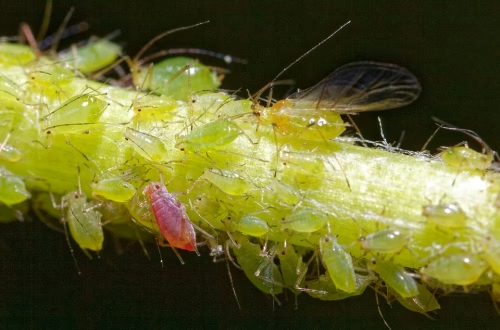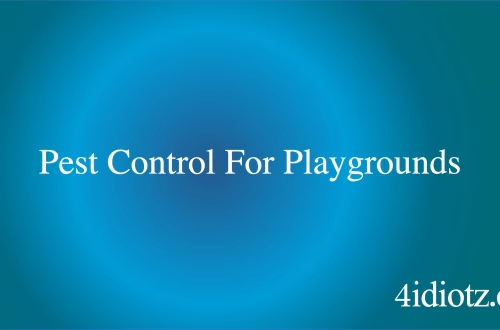Summary:
Preventive pest control is a proactive approach to managing pests before they become a serious problem. It involves regular inspections, sanitation, sealing entry points, and using environmentally friendly treatments to deter infestations. Homeowners, renters, and businesses all benefit from these strategies, as pests can cause property damage, health risks, and legal compliance issues. State and federal laws regulate pest control methods, emphasizing safe and responsible practices. By implementing preventive measures, you can save money, protect your health, and avoid costly extermination services later.
What This Means for You:
- Lower long-term costs: Preventive measures reduce the need for expensive emergency pest control treatments.
- Health protection: Minimize exposure to allergens, bacteria, and diseases carried by pests.
- Property preservation: Prevent structural damage from termites, rodents, and other destructive pests.
- Future outlook: Climate change may increase pest activity, making prevention even more critical.
Preventive Pest Control Tips Explained:
Preventive pest control focuses on stopping infestations before they start by addressing conditions that attract pests. This includes eliminating food sources, sealing cracks and gaps, maintaining proper sanitation, and using non-toxic deterrents. Unlike reactive pest control, which deals with existing infestations, prevention is a long-term strategy that minimizes risks and keeps properties pest-free.
Key elements of preventive pest control include routine inspections, moisture control, proper waste management, and landscaping practices that discourage pests. By integrating these habits into regular home or business maintenance, you create an environment that is less inviting to pests, reducing the likelihood of an infestation.
Types of Pest Issues:
Pests can be broadly categorized into insects (ants, cockroaches, bed bugs), rodents (mice, rats), and wildlife (raccoons, squirrels). Each type poses unique challenges and requires specific preventive measures. For example, ants are attracted to food residues, while rodents seek shelter and nesting materials.
State and federal laws regulate pest control to ensure safety and environmental protection. The Environmental Protection Agency (EPA) oversees pesticide use, while local health departments enforce sanitation and housing codes. Some states, like California, have strict regulations on chemical treatments, requiring integrated pest management (IPM) approaches that prioritize non-toxic solutions.
Common pest-related legal issues include landlord-tenant disputes over infestations and fines for improper pesticide application. Businesses in the food and hospitality industries must adhere to health codes that mandate pest-free environments.
Common Pest Control Methods:
Effective preventive pest control methods include sealing cracks and gaps with caulk or steel wool, storing food in airtight containers, and eliminating standing water to deter mosquitoes. Regular trash disposal and deep cleaning reduce attractants for pests like flies and rodents.
Natural deterrents, such as essential oils (peppermint for spiders, lavender for moths) and diatomaceous earth (for crawling insects), provide non-toxic alternatives. For severe risks, professional-grade baits and traps can be used strategically. Successful strategies often combine multiple approaches, such as IPM, which blends prevention, monitoring, and minimal chemical intervention.
Risks and Consequences:
Ignoring preventive pest control can lead to severe consequences, including structural damage from termites or carpenter ants, contaminated food supplies from rodents, and health hazards like asthma triggers from cockroach allergens. Pests such as mosquitoes and ticks can transmit diseases like Lyme disease and West Nile virus.
Businesses face additional risks, including reputational damage, regulatory fines, and potential closures due to health code violations. Infestations can also lead to costly repairs and decreased property values. Early prevention is far more economical than dealing with a full-blown infestation.
Choosing a Pest Control Service:
Selecting the right pest control service is crucial for effective prevention. Look for licensed professionals with experience in preventive strategies and IPM. Check reviews and ask about their approach to eco-friendly solutions.
Key factors include service guarantees, inspection frequency, and transparency about treatment methods. A reputable provider will offer customized plans based on your property’s specific risks. Avoid companies that rely solely on chemical treatments without addressing underlying causes.
People Also Ask About:
- How often should I schedule preventive pest inspections? Experts recommend quarterly inspections for homes and monthly for businesses in high-risk industries like food service.
- Are natural pest deterrents effective? Yes, solutions like peppermint oil and vinegar can repel certain pests, though severe infestations may require professional intervention.
- What are the most common entry points for pests? Gaps around pipes, windows, doors, and foundations are typical entryways that should be sealed.
- Can pests return after treatment? Without preventive measures, pests can return. Ongoing maintenance is key to long-term control.
- Is DIY pest control safe? While some methods are safe, improper use of chemicals can pose health risks. Consult a professional for persistent issues.
Expert Opinion:
Preventive pest control is increasingly vital as pest populations grow due to climate change and urbanization. Experts emphasize the importance of early detection and non-chemical solutions to minimize health and environmental risks. Homeowners and businesses should prioritize regular maintenance and professional consultations to stay ahead of infestations. Ignoring small signs, like droppings or gnaw marks, can lead to larger problems down the line.
Related Key Terms:
- Eco-friendly pest control solutions for homes
- Best preventive pest control methods for businesses
- How to seal home entry points against pests
- State regulations on pest control chemicals
- Integrated Pest Management (IPM) for homeowners
- Non-toxic pest deterrents for families
- Professional pest inspection services near me
Pest Control Disclaimer
This content is for educational purposes only and does not replace professional pest inspection, treatment, or safety advice. Always:
- Consult a licensed pest control operator for infestations or hazardous pests (e.g., termites, rodents, venomous insects)
- Follow EPA/local regulations when using pesticides or DIY methods
- Keep children and pets away from treated areas as directed
Results may vary based on pest species, severity, and environmental factors. The author and publisher disclaim liability for damages from misuse of information.
*Featured image sourced by Pixabay.com




